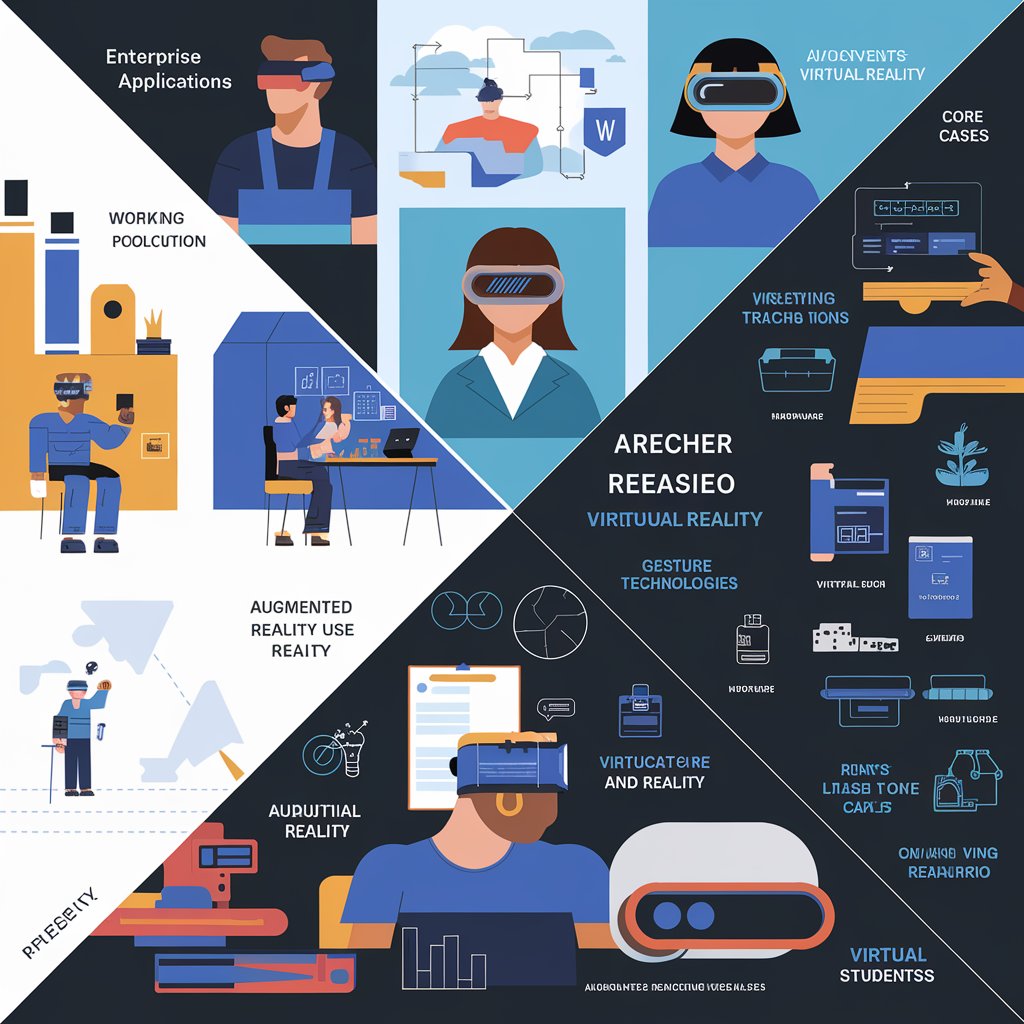The Augmented Reality (AR) and Virtual Reality (VR) industry is evolving rapidly, transforming the way businesses operate and how consumers interact with digital content. Key growth trends shaping this dynamic industry include:
- Enhanced Immersive Experiences: Advances in AR and VR technologies are leading to more immersive experiences with improved graphics, spatial audio, and haptic feedback. These developments are creating more realistic environments for applications in gaming, healthcare, education, and training.
- Integration with AI and Machine Learning: The incorporation of AI and machine learning into AR and VR is significantly enhancing capabilities such as object recognition, gesture control, and real-time data processing. This integration allows for more interactive and context-aware applications, expanding the potential use cases of AR and VR.
- Adoption in Enterprise and Industrial Sectors: Businesses are increasingly adopting AR and VR solutions for various purposes, including employee training, product design, and remote collaboration. For instance, AR is used in manufacturing for assembly line optimization, while VR is employed in the automotive industry for virtual prototyping and design testing.
- 5G and Edge Computing: The deployment of 5G networks and edge computing is a significant driver for the AR and VR market. 5G offers low latency and high bandwidth, enabling seamless real-time experiences crucial for applications like remote surgery, autonomous vehicles, and smart manufacturing.
- Development of Wearable Technology: The AR and VR industry is focusing on creating more ergonomic and affordable wearable devices, such as AR glasses and lightweight VR headsets. This makes the technology more accessible to both consumers and businesses, fueling market growth.
- Growth of the Metaverse: The concept of the metaverse is gaining traction, where AR and VR technologies are used to create virtual worlds for social interaction, commerce, and entertainment. Companies like Meta (formerly Facebook) are investing heavily in building metaverse platforms, signaling a shift toward more immersive digital experiences.

Regional Insights into the Augmented and Virtual Reality Industry
The AR and VR market is experiencing varied growth patterns across different regions, influenced by factors such as technological infrastructure, investment, and consumer adoption rates.
- North America: North America leads the AR and VR market, driven by high technology adoption rates, significant investments in research and development, and the presence of major industry players like Meta, Microsoft, and Google. The region sees substantial use of AR and VR in sectors like healthcare, entertainment, and education, with the U.S. being the largest contributor.
- Europe: Europe is a key market for AR and VR, with growing adoption in industries such as automotive, manufacturing, healthcare, and retail. The region is also seeing increased government support for digital transformation initiatives, boosting the integration of AR and VR in public services and education.
- Asia-Pacific: The Asia-Pacific region is expected to witness the highest growth rate in the AR and VR market. Countries like China, Japan, and South Korea are at the forefront, driven by advancements in technology, growing consumer demand, and investments in AR/VR startups. The region’s gaming industry is a significant growth driver, along with increased adoption in e-commerce, healthcare, and education.
- Latin America: While still emerging, the AR and VR market in Latin America is gaining momentum, with growing applications in sectors such as education, entertainment, and retail. Improving digital infrastructure and increasing smartphone penetration are key factors driving market growth in this region.
- Middle East and Africa (MEA): The MEA region is witnessing a gradual increase in AR and VR adoption, particularly in sectors like retail, education, and healthcare. Government initiatives promoting digitalization and smart city projects are providing further opportunities for AR and VR technologies to flourish.
Future Opportunities in the Augmented and Virtual Reality Industry
The AR and VR industry presents a plethora of future opportunities across various sectors, driven by continuous technological advancements and expanding application areas:
- Healthcare: AR and VR have transformative potential in healthcare, from medical training and surgical simulations to patient care and rehabilitation. For instance, AR can assist surgeons with real-time data overlays during operations, while VR can be used for pain management and mental health therapy.
- Education and Training: AR and VR technologies offer immersive learning experiences that can revolutionize education and professional training. Virtual classrooms, interactive simulations, and training modules for complex tasks provide more engaging and effective learning environments.
- Retail and E-commerce: AR is enhancing the retail experience by allowing customers to virtually try products before making a purchase. VR can create virtual showrooms, providing customers with a unique shopping experience without the need for physical stores.
- Real Estate and Architecture: AR and VR can revolutionize the real estate industry by enabling virtual property tours and 3D architectural visualizations. Clients can explore properties remotely in a realistic manner, improving decision-making and reducing the need for physical visits.
- Entertainment and Media: The entertainment industry is leveraging AR and VR to create more immersive gaming, live events, and virtual concerts. The rise of the metaverse is opening new opportunities for social interaction, content creation, and monetization in virtual environments.
- Remote Work and Collaboration: With the rise of remote work, AR and VR technologies are being used for virtual meetings, collaborative design, and remote maintenance. They offer a more interactive and engaging way for teams to collaborate across different locations.
The future of the Augmented and Virtual Reality industry is promising, with ongoing technological advancements and increasing adoption across various sectors. As AR and VR continue to evolve, they will reshape industries, enhance user experiences, and unlock new opportunities. However, realizing this potential will require addressing challenges related to cost, privacy, content creation, and technology standardization.